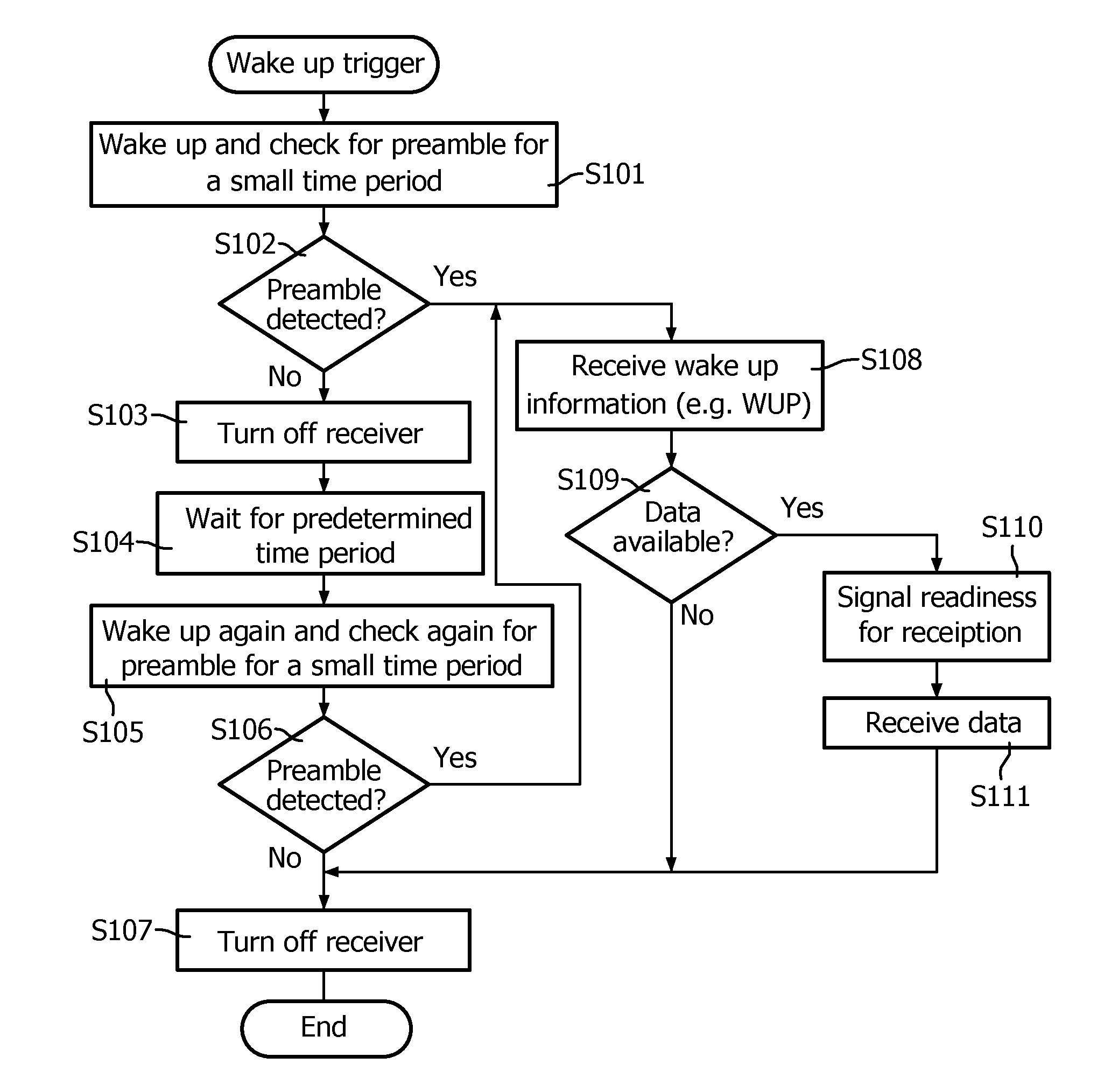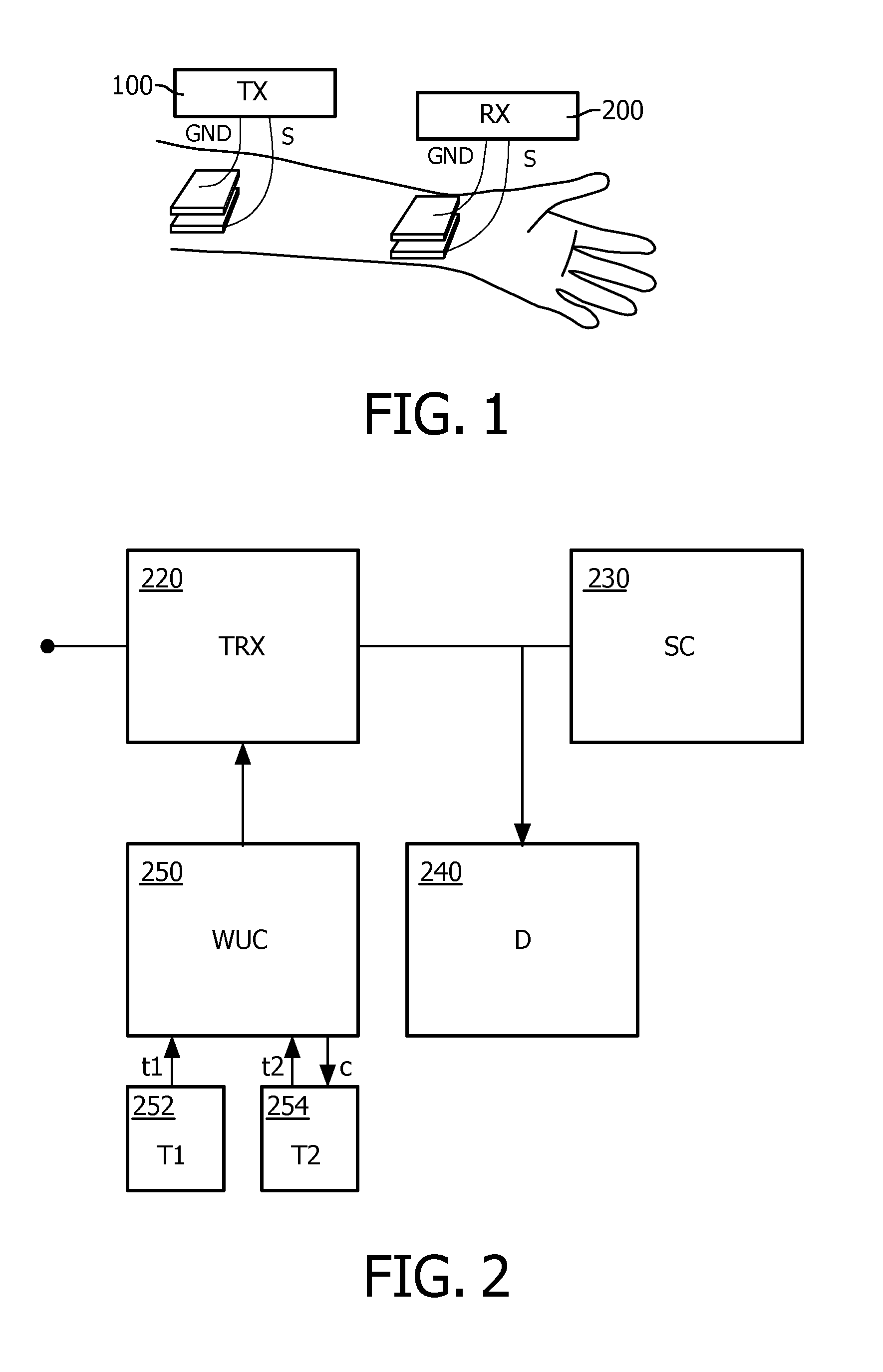Asynchronous transmission with double wake up
a technology of asynchronous transmission and wake up, applied in the field of system, apparatus, method and computer program product for controlling asynchronous transmission of communication signals, can solve the problems of long operation life even from a small form factor battery, overhead power consumption both in transmission and reception, and achieve the effect of being particularly power efficien
- Summary
- Abstract
- Description
- Claims
- Application Information
AI Technical Summary
Benefits of technology
Problems solved by technology
Method used
Image
Examples
first embodiment
[0030]In the first embodiment, the wake up controller 250 controls the start of the second timer circuit 254 by a control signal c.
[0031]In the following, a double wake up control by the wake up controller 250 is described in more detail.
[0032]A transmitter of the concerned BAN transmitter sends a near constant sequence of wake up messages (e.g. WUPs), each wake up messages being preceded by a preamble. Based on the wake up schedule, the wake up controller 250 activates the receiver or receiving operation of the TRX 220 and triggers a timer operation of the first timer circuit 252. Thus, the detector circuit 240 checks, for the short time period counted by the first timer 252, for a preamble in the received signal. In case the detector 240 indicates that a preamble has been detected, the wake up controller 250 controls the receiver of the TRX 220 to stay on so as to listen for the entire wake up message.
[0033]Otherwise, if the detector circuit 240 does not detect any preamble in the...
second embodiment
[0038]FIG. 3 shows a schematic flow diagram of a wake up control procedure according to a This procedure may be implemented in the wake up controller 250 of FIG. 2.
[0039]The procedure of FIG. 3 is initiated or triggered by a wake up trigger which may be generated during every cycle of a wake up schedule.
[0040]In step S101 the receiver is activated or woken up and a check for the preamble of a wake up message or command is performed for a small time period sufficient to detect the preamble. In step S102 it is checked whether a preamble has been detected during the small checking period.
[0041]If it is determined in step S102 that a preamble has not been detected, the procedure continues with step S103 and the receiver is turned off. Then, in step S104, an intermediate waiting period is introduced with a predetermined length to ensure that a preamble, if transmitted, will be received after this waiting period. Accordingly, in the subsequent step 5105, the receiver is reactivated or wo...
PUM
 Login to View More
Login to View More Abstract
Description
Claims
Application Information
 Login to View More
Login to View More - R&D
- Intellectual Property
- Life Sciences
- Materials
- Tech Scout
- Unparalleled Data Quality
- Higher Quality Content
- 60% Fewer Hallucinations
Browse by: Latest US Patents, China's latest patents, Technical Efficacy Thesaurus, Application Domain, Technology Topic, Popular Technical Reports.
© 2025 PatSnap. All rights reserved.Legal|Privacy policy|Modern Slavery Act Transparency Statement|Sitemap|About US| Contact US: help@patsnap.com



